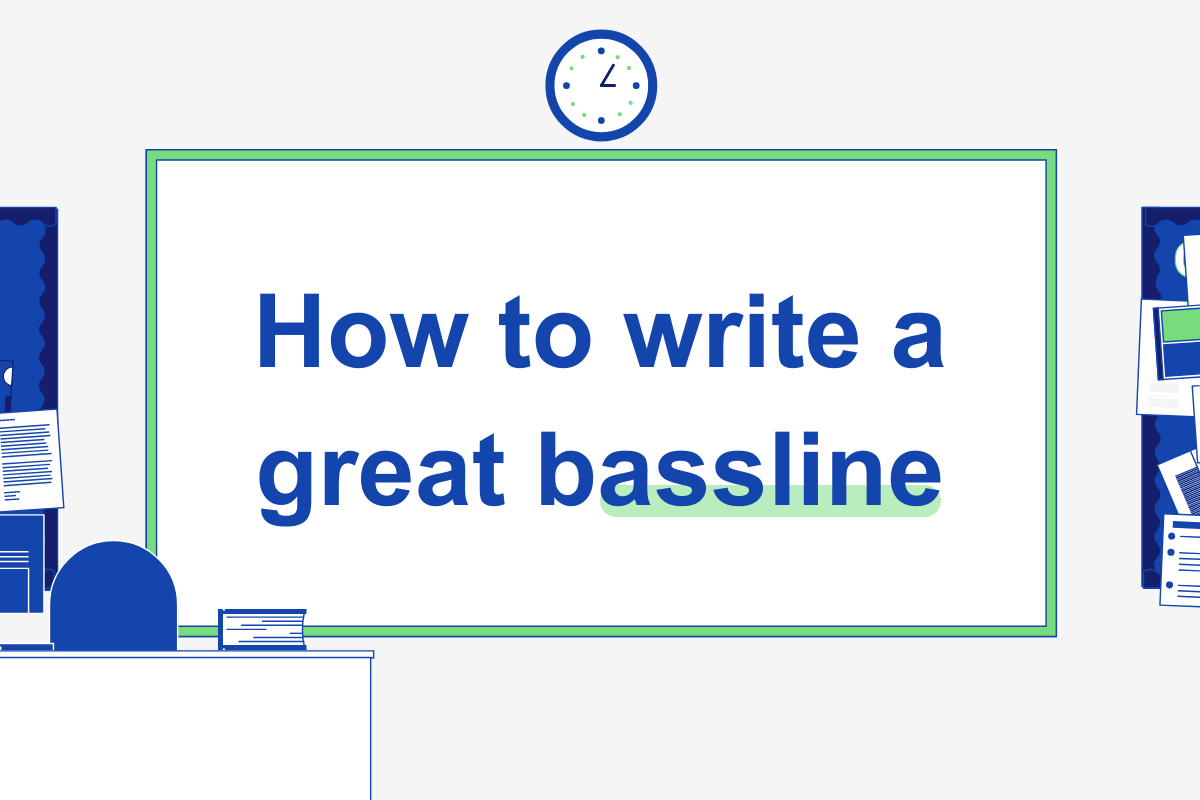How to write a bassline
Check out our guide to the basics of how to write bass lines, with tips for how to make a bass part more interesting in music production.
When you’re creating music especially as a beginner producer, a catchy or emotional melody might seem the obvious thing that will hook your listener – but knowing how to write a good bass line for a song is equally important. Creating a great bass line both grounds the song and pushes everything else along.
Whether it’s a synth bassline or bass guitar, the bass is what gives a song depth. It supports the melody and drums and is the heart of establishing the key of the song. In the rhythm section of a band, the bassist is just as important as the drummer for keeping a steady tempo.
How to make a bassline for a song – getting started
There are some rules that beginners writing a bassline need to keep in mind. The answer to what makes good bass lies in music theory.
Bass parts compliment the melody by working around the root notes of the chord sequence. The root note of a chord is the bottom note of a triad.
The most basic basslines simply follow the chords playing the root notes. Below are triads of the chords C, F and G, with root notes.
Sticking to the root can get boring fast, though. Next try including the other notes of the chord triad – the third and fifth. The third helps identify if your song is in a major or minor key. You can also alternate between the root and fifth.
Going forward, if you keep to bass notes within the scale of the key that your song is in, nothing will sound out of place.
Once you’ve got your head around beginner’s bass theory, it’s time to start making your basslines more interesting. Listen to songs with iconic basslines from whatever genre you’re making music in – whether that’s the best boogie woogie blues basslines or the best 808 trap basslines – to get inspired.
Then start playing around with bass rhythm, melody and tone in your own producing.
Try adding passing notes
A classic bassline technique is to travel to the next root note using notes in between as stepping stones. Listeners can tell the notes are moving towards the next target root, cancelling out any dissonance.
Don’t be afraid to add more than one bass riff
Nobody said you had to keep the same bass structure the whole way through your song. From the beginning, Rage Against the Machine’s “Bombtrack,” for example, skips through riffs keeping the listener nodding along.
Use octave jumps
An easy way to make a bassline more interesting is to alternate between octaves from the root note of your chords – think “Plug in Baby” by Muse.
Follow the melody
Make your bassline a catchy riff and have your listener’s attention from the start by constructing the bass around the melody for an ultimate earworm – see Michael Jackson’s “Smooth Criminal.”
Push the drums along
Try different rhythms to add spice to the bass part. The bass should always work in tandem with the drums, and by doubling up the drumbeat in the bass you can really inject some excitement into the song.
Use space
Artful use of silence is a great bassline technique. The syncopation of “The Lovecats” by The Cure makes for a slinky accompaniment.
After researching techniques such as how to write a walking bassline, the best way to write better bass lines is practise.
Mess around with different notes and note lengths in your DAW piano roll, experiment using your MIDI keyboard, or jam on your bass guitar until you feel more confident.
